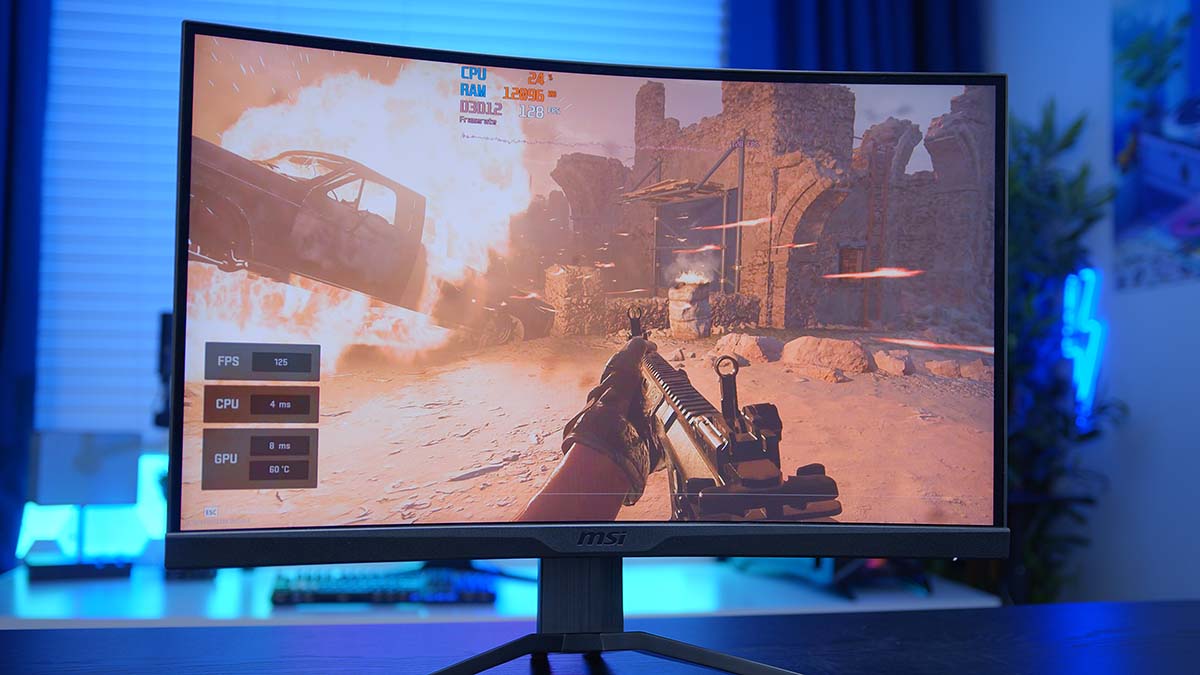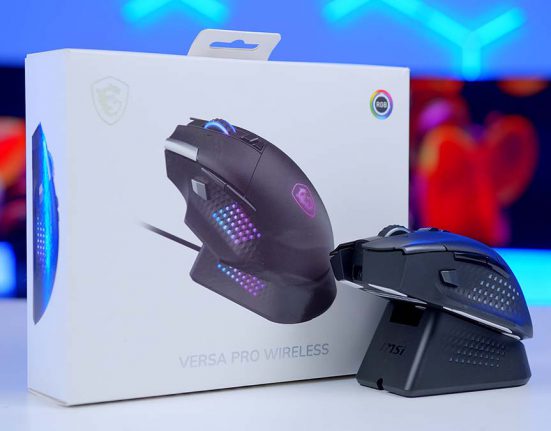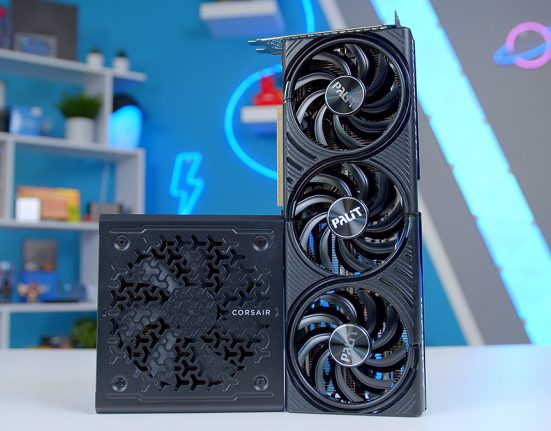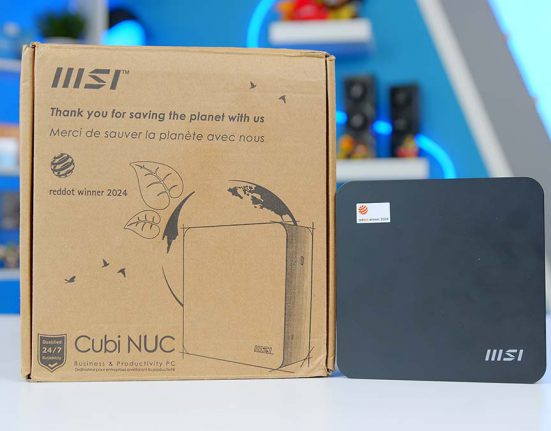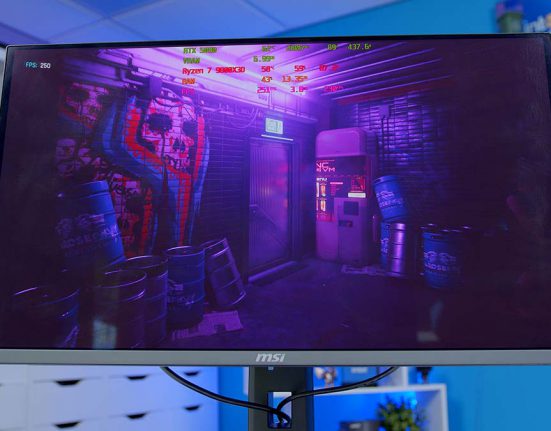Introduction
MSI is a reputable manufacturer for all things PC gaming. Whether you’re looking for a motherboard, power supply, graphics card, peripherals, and more, MSI have got you covered. More specifically, MSI have a huge range of monitors that cater to a massive range of budgets and use-cases.
Many of their monitors are perfect for those looking to secure a cheaper option, especially a higher resolution display, such as 1440p and 4K. In today’s review we’re taking a detailed look at one of MSI’s newer budget options, the MSI MAG 275CQRF-QD, a 1440p quantum dot monitor that looks to offer some solid gaming features at a very reasonable price point.
Buy the MSI MAG 275CQRF-QD on:
Quantum Dot Monitors – Are They Worth It?
Quantum dot monitors have started to see some growth in popularity within the past couple of years. This technology is often seen paired alongside OLED panels, because this increases the vibrancy and colour accuracy of the monitor’s display panel. But the big question that still remains, are quantum dot monitors worth it?

The entire point of quantum dot displays is to provide better colours, lighter whites, darker blacks, and a stronger overall brightness. However, these quantum dots need to be paired up with monitor panel in order to make use of them. There are four main panels that monitor manufacturers may opt to use, these are TN, VA, IPS, and OLED. They all have their own strengths and weaknesses, but IPS and OLED really show off the capability of quantum dots because of their increased vibrancy and visual fidelity.
While quantum dot monitors might be worth using with a TN, or VA panel, the increased benefit might not be visible due to the fact that these panels are often weaker when it comes to brightness and quality. So while a quantum dot display can definitely be worth securing, the benefits might be somewhat negligible dependent on the panel that you’ve picked up.
Suggested Article: ASUS ROG Swift OLED PG49WCD Review – 49 Inches of a Crazy Vibrant Screen
MSI MAG 275CQRF-QD Design & Aesthetic
Upon opening the box for the 275CQRF, I was greeted with a rather small 27 inch panel sitting in between two polystyrene inlays. The panel itself sports a pretty minimalist design with a hefty plastic bezel that sits underneath the display. This bezel is quite chunky, and might be off-putting for those that prefer a more sleek display. However, this bezel adds to the robust structure of this monitor, and has very little flex overall which is great to see. The rest of the housing around the monitor’s VA panel is fairly sleek, its good to see that MSI have provided as much screen real estate as possible, despite only being 27 inches in size.

The stand that comes with the 275CQRF is fairly minimalist too, there’s no RGB here, which I do prefer. The stand itself is very easy to assemble, and only requires two screws to be tightened, which you’ll find in a small bag in the box. The stand has plenty of adjustability, 130mm of movement for the height, and five to 20 degrees of tilt. It is a bit sad that there’s no swivel adjustment, but you can achieve this relatively easily by placing the monitor on an arm.
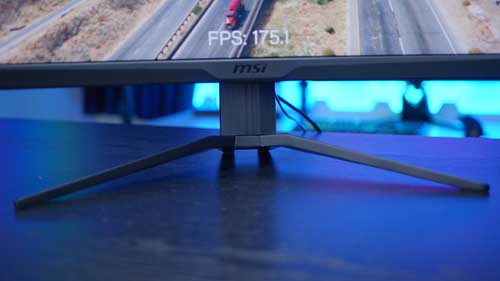
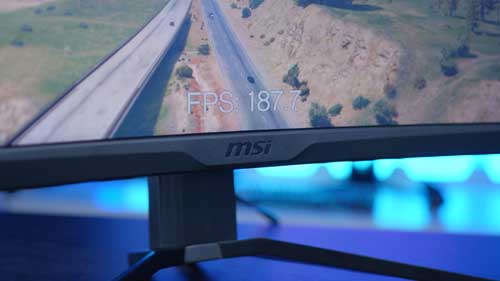
There isn’t a whole lot else to talk to when it comes to the design. MSI haven’t gone crazy when it comes to features external to the performance of the monitor. This is ultimately to bring down the cost of this display, hence the overall cheaper look and style. But despite this, I feel most consumers will be pretty happy with the design. I prefer a more minimalist aesthetic anyway, which is exactly what the 275CQRF offers.
MAG 275CQRF-QD Visual Quality
Taking a look at the overall visual quality of this MSI display, I can’t say I was particularly impressed, but I wasn’t disappointed either. Because the MAG monitor uses a rapid VA panel as opposed to IPS or OLED, the overall image fidelity isn’t insane. While I do think MSI have done their best to ensure quality here, the peak brightness is the biggest weakness. The panel being used has a rated peak brightness of 300 nits, which isn’t spectacular. There is a noticeable difference versus the other monitor I’m using while writing this review, which is the Gigabyte AORUS M27Q.
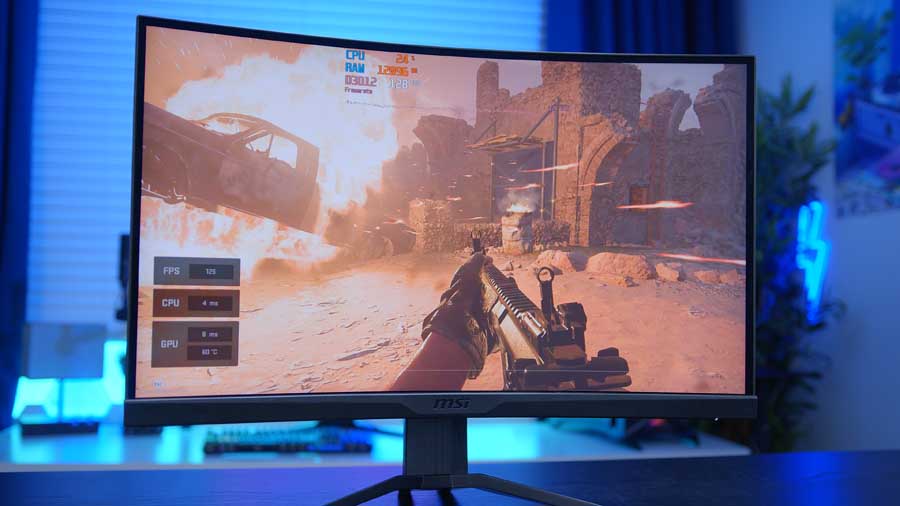
Despite the problems I have with the brightness and overall image quality, responsiveness is great. The MAG 275CQRF-QD offers a 1ms response time, and can be clocked to 170Hz on the refresh rate. AdaptiveSync is also being used as the chosen VRR technology, so stuttering, tearing, and artifacts should be kept to a minimum.
To test out performance, I fired up Destiny 2 and continued the Lightfall campaign. The response times are really tight here, and I found there was effectively no noticeable input lag, even during moments of intensity. Again, I do feel visual quality isn’t exceptional, and this is ultimately down to the fact that the display panel is VA. But if you’re the kind of consumer prioritising performance over quality, you won’t be disappointed.
Features We Like
In this next section we’ll be delving into the range of features that the MAG 275CQRF offers. We’ll be taking a look at the ones that we thought were impressive or particularly notable, along with others that we think could be improved upon.
A Very Responsive Display
The most impressive area of this monitor is how responsive it feels during gameplay. MSI have definitely put a focus on performance, making it very clear that gamers are their focus. The refresh rate, response time, and VRR technology are all working in sync to ensure there’s no tearing or stuttering. And in my experience of using this monitor for the purpose of this review, I had no issues with how quickly the 275CQRF-QD responded to big, or quick changes to the image that was on screen at the time.
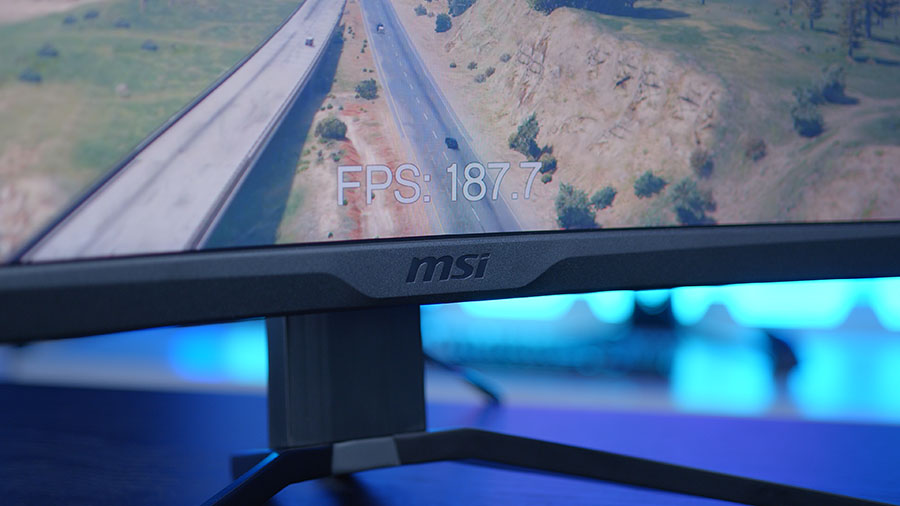
Offers a KVM Mode
Although I wouldn’t argue this monitor is particularly ideal for workstations there are some nice usability features that make it a better option for productivity. Namely, the included KVM mode allows consumers to control multiple devices via one set of peripherals. This allows you to seamlessly change between a laptop and desktop machine with minimal hassle.

Focuses on Eye Care
Monitors tend to emit a lot of blue light, which can be quite harsh on the eyes at times. However, MSI have provided some extra quality of life features that will provide some protection for your eyes, and improve the overall user experience of this display.
In particular, the anti-flicker technology quite simply reduced the amount of times the display flickers per second. This adds to the overall comfort of using the monitor. Secondly, in the OSD, consumers can turn on the Low Blue Light mode to reduce the amount of extra blue light that this monitor might emit. This just furthers the level of comfort that the MAG 275CQRF offers.
Decent IO
The MAG 275CQRF-QD comes with an included set of USB ports (two to be specific). These are unfortunately USB 2.0 ports, but they still provide consumers a way to plug in peripherals without the hassle of having to get behind your PC. In terms of display options, this MSI monitor also offers two HDMI 2.0b ports, alongside a DisplayPort 1.2 option. The USB Type-C port on the rear also acts as a DisplayPort alt option, or can provide 15W of charging through power delivery.
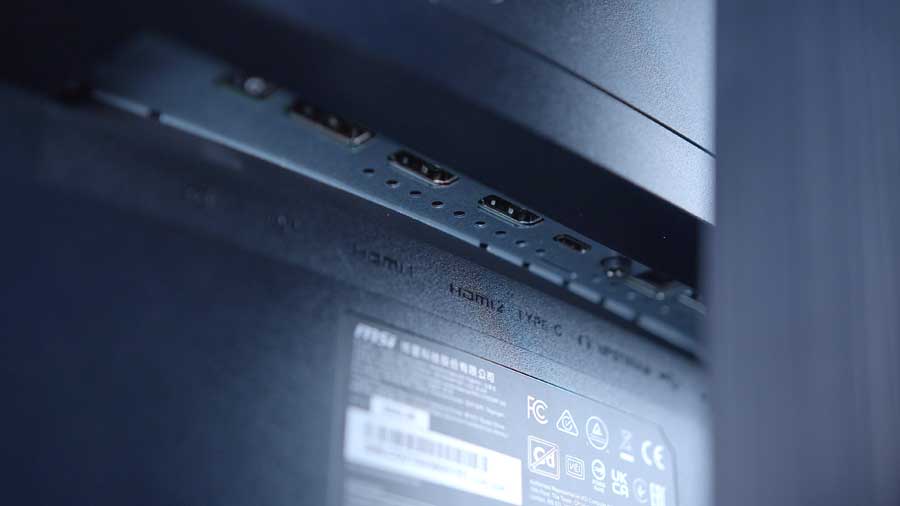
Features We Don’t Like
Colour Accuracy Feels Pointless
As we’ve discovered with some other monitor reviews we’ve done in the past, colour accuracy, or rather, finding a good colour accurate monitor can be expensive. These monitors need to have a high quality panel, because the whole point of colour accuracy is to recreate what the human eye sees, or to customise colours so that you can get them exactly how you want them to be displayed.
Because the MAG 275CQRF-QD uses a VA panel, all of the effort that has gone into covering various RGB colour spaces feels a bit pointless. Most colour accurate monitors offer a high peak brightness, and have been graded with a Delta E value to ensure colours the colours are exactly as we’re seeing them. While I do commend the effort MSI have gone to, I can’t imagine many consumers looking to build a workstation PC will look to this display for colour accuracy.
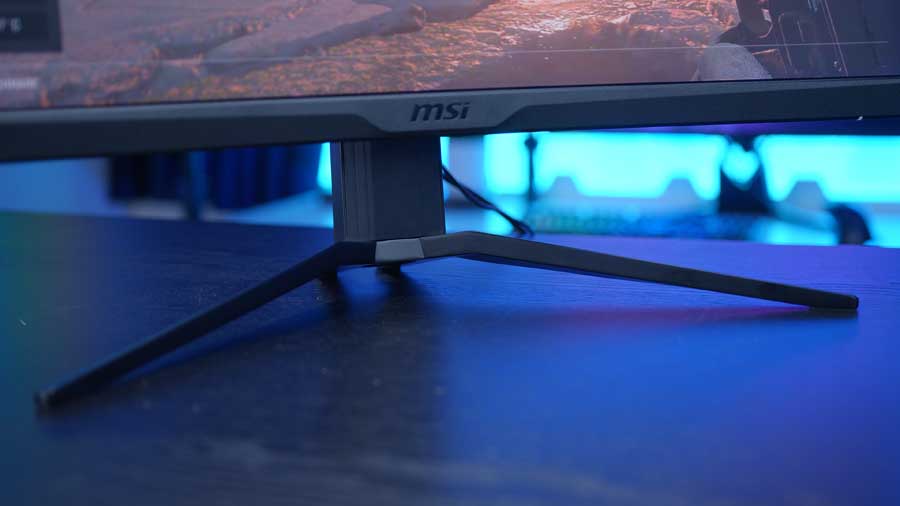
Uses a Barrel Connector for Power
As a general rule of thumb, most monitors tend to use a kettle lead to supply power. However, there are a select few that provide a barrel connector and power brick to provide power. Although MSI does include this connector, I don’t know why a kettle lead wasn’t used instead. If you’re like me, and you’ve got a number of different PC cables for different things, having a unified set of cables just makes things simpler is you’re prone to losing items.
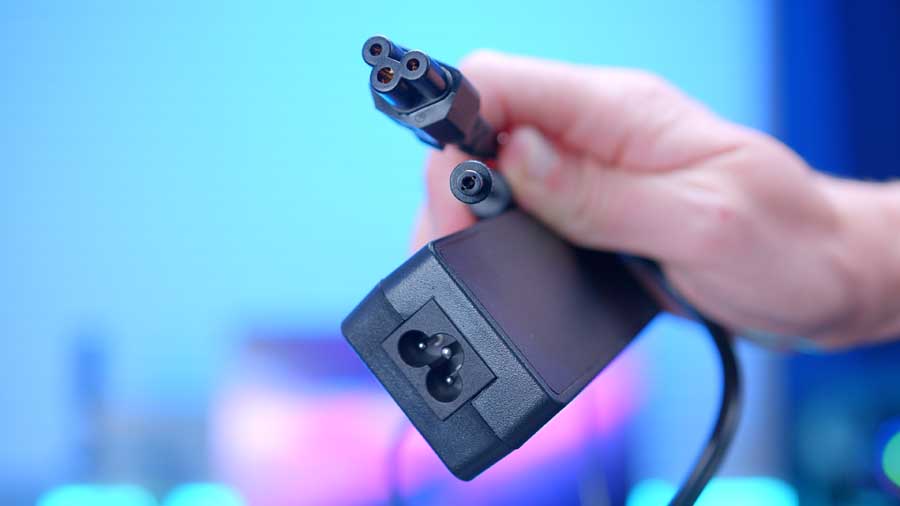
Ultimately this is a smaller criticism of the MAG 275CQRF overall, but I do think the day and age of using barrel connectors is gone and MSI could keep up with the times and offer a kettle lead.
Alternative Option
There are a number of alternatives on the market right now that come in at a similar price point, with some offering a better value-proposition versus the MAG 275CQRF display. We’ve picked out one in particular that stood out to us as a good option.
iiyama G-Master GB2790QSU-B1
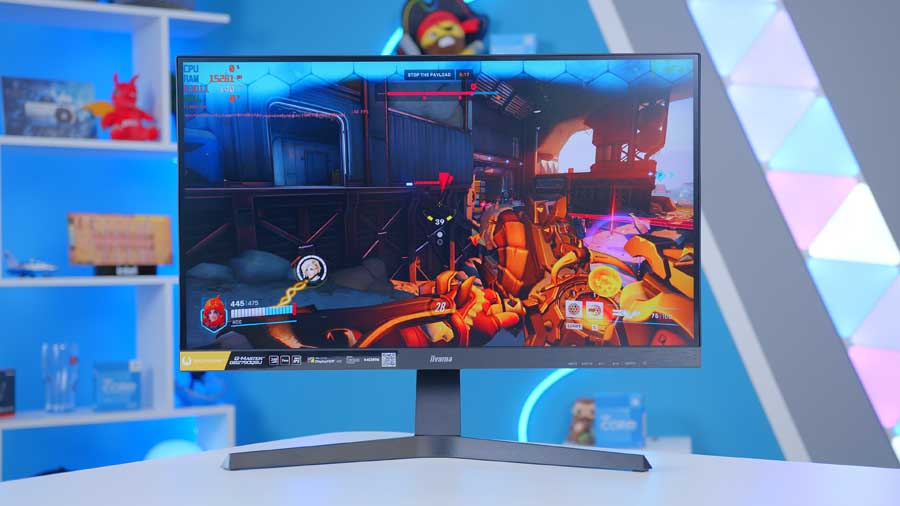
The monitor that we’ve picked out as a decent alternative is the G-Master GB2790QSU-B1 from iiyama. While sitting at a slightly higher price point when compared to the MAG 275CQRF, the G-Master offers excellent visual quality, alongside a higher refresh rate too. The G-Master thrives in gaming, but will also offer consumers with a workstation system a pretty solid experience due to the rapid IPS panel that this monitor utilises.
While I do commend MSI for being more competitively priced than the iiyama G-Master, the extra expenditure you’re paying for a better monitor panel, stronger brightness, and a higher refresh rate will be worth it for many.
Buy the iiyama G-Master GB2790QSU-B1 on:
Conclusion
MSI MAG 275CQRF-QD
Product Name: MAG 275CQRF-QD
Brand: MSI
-
Features
-
Design
-
Performance
-
Value For Money
Summary
MSI’s MAG 275CQRF-QD is a monitor that confuses me. One the one hand, MSI have manufactured a somewhat cheap, responsive display that offers what I would consider ‘fine’ visual quality, alongside some other usability and quality of life features that make this monitor easy to use. And on the other hand, MSI haven’t delivered on a monitor that competes well with the current market alternatives, that also uses a strange choice of panel, decreasing the overall fidelity, and have included some productivity features that feel a bit pointless.
The reason why I’m so confused, is because I don’t know what target market or demographic this monitor is attempting to hit. The responsiveness is geared towards gamers, and it does deliver on that front. But the rather weak visual quality does not cater well towards those prioritising colour accuracy. VA is probably the worst choice of panel that could have been used here because they don’t offer great brightness, and they’re not that vibrant when it comes to colours. So to me, it seems very strange to further compound how odd this monitor is, by using quantum dots. Most consumers with a workstation PC would not pick this monitor up for colour accuracy because there are a plethora of excellent alternatives that provide much better fidelity and vibrancy. And while the cheaper price is a valid point to raise, I would argue a productivity system is likely going to be expensive, hammering home the fact that workstation systems aren’t really geared towards tighter budgets.
I really want to love the MAG 275CQRF, but MSI have significantly let themselves down by being cheap on the panel choice. We’d much prefer an IPS panel with better brightness, as this would significantly increase the overall user experience and image quality that the display offers. But in its current state, we would recommend looking at some other 1440p alternatives before you make your decision.
Pros
✅ Pretty competitive pricing.
✅ Solid response times and overall gaming experience.
✅ Delivers some useful productivity features.
Cons
❌ Colour accuracy feels pointless with the weaker panel choice.
❌ Peak brightness is fairly low.
❌ Many alternatives offer a better visual quality experience.


